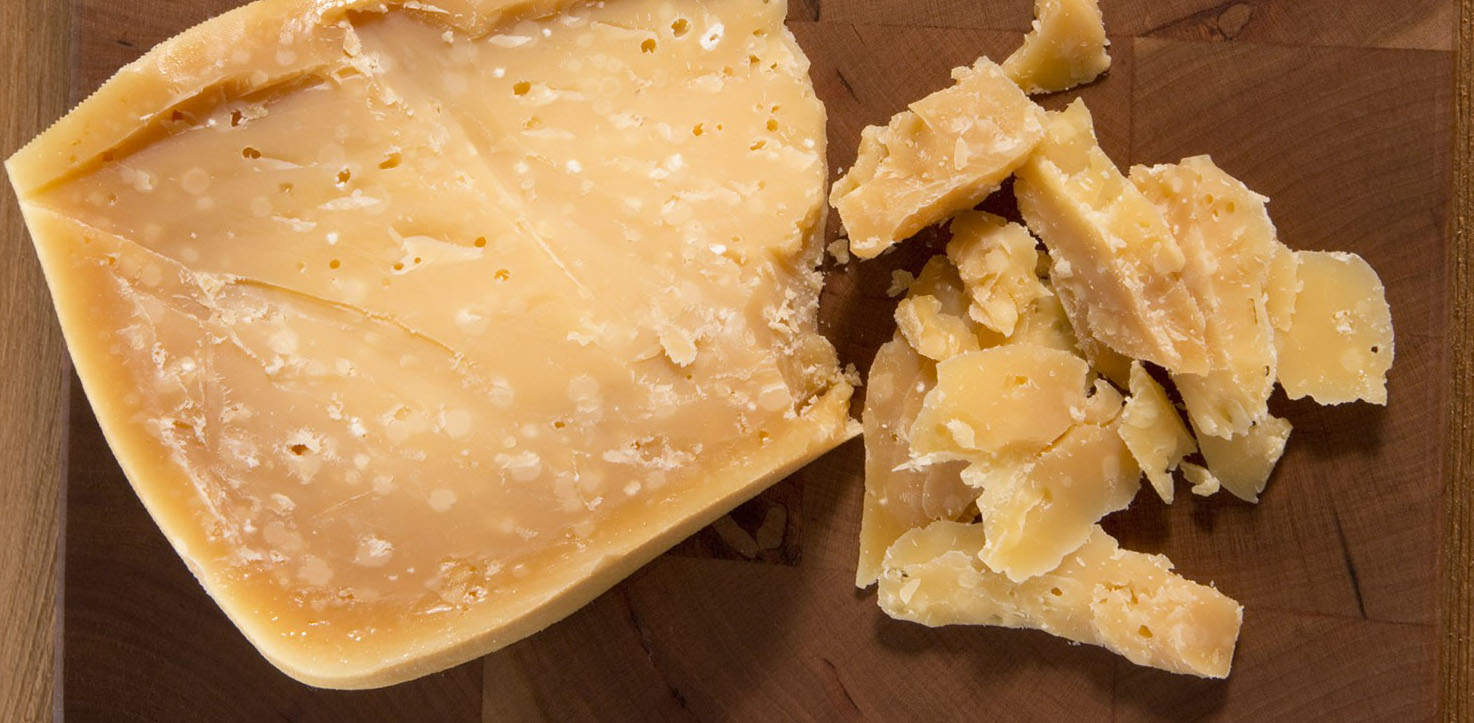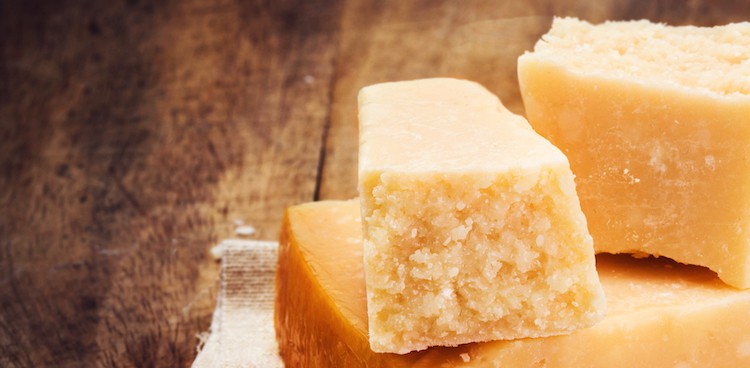
Mongers across the country field a similar question day after day: “Do you have any cheeses with the crunch?” Once largely considered a defect, cheese crystals have risen to prominence and are now a pillar of the cheese geek zeitgeist.
During my graduate studies in food science at the University of Vermont, I developed a newfound appreciation for “the crunch” while gazing at countless cheese crystals under a microscope. Often erroneously explained away as salt crystals, the true identities of these specks—and the way they form in different styles of cheese—shed light on the fascinating chemistry of cheese aging.

Aged wheels like gouda, Parmigiano Reggiano, and Alpine styles have a common thread that unites their disparate geographies: tyrosine and leucine crystals distributed throughout their interiors. Tyrosine and leucine are amino acids. Amino acids are the building blocks of protein. Protein, namely casein protein, forms the structure and body of cheese. Replaying this long-winded description in reverse helps explain the crystals’ origins: As cheese ages, its protein breaks down, and amino acids like tyrosine and leucine are formed. With the passing months and years, continued protein breakdown yields a veritable treasure trove of amino acid crystals. These crystals, like all cheese crystals, don’t contribute any flavor on their own. However, since they are markers of protein breakdown, they indicate that the cheese has some ripening time under its belt, and therefore should be flavorful.
You may have seen a wedge of aged cheddar with a white haze or distinct white flecks on its surface. This is the calling card of calcium lactate crystals. How do they form? Let’s break it down. Calcium is a crucial structural component of cheese—it “glues” casein protein together. Lactate, a.k.a. lactic acid, is a product of the fermentation process. In cheese, these two don’t exist in isolation; the presence of calcium is directly linked to the formation of lactic acid. Just like the acid in soda leaches calcium from our teeth, lactic acid dissolves calcium from the casein protein in cheese. When the lactic acid and freed calcium reach high enough levels in the cheese, they can crystallize—and calcium lactate crystals are born.

Hook’s 20 Year Cheddar
Bloomy rind cheeses like brie and camembert usually fly under the crystal radar. After all—how often do we experience crunch in soft, runny cheeses like these? O ye, of little faith. These cheeses can have rinds riddled with calcium phosphate crystals. As I mentioned, calcium is a structural component of the cheese body. Phosphate plays a similar role. As molds like Penicillium camemberti begin to colonize the rinds of these cheeses, they consume residual lactic acid made by starter cultures. The net effect is reduced acidity, which calcium and phosphate don’t particularly like—and forming crystals is their way of expressing displeasure. Since these crystals tend to be softer than the others we’ve discussed, they often go unnoticed on the palate.
Washed-rind cheeses are revered—and reviled—for their robust aromas and flavors. Just as bloomy rind wheels have surface molds to thank for their unique flavors and textures, washed rinds are colonized by bacteria like Brevibacterium linens. The orange color of the rind is often the first thing people notice—but its gritty, sandy texture also stands out. Habitually attributed to residual salt (to my extreme frustration), this grit is made up of two very fascinating crystals: ikaite and struvite. The former is made up of calcium and carbon dioxide. The latter is composed of magnesium, phosphate, and ammonia. Each of these components deserves an article in their own right—but the unifying feature is that these components result directly from the cheese’s chemistry and the metabolism of surface microbes. Extremely rare in the natural world, these crystals are an oddity of the cheese ripening process. Ikaite has been identified in arctic ice environments. Struvite is associated with marine environments and can be found in canned fish products. Why are washed-rind cheeses the latest place these crystals have been discovered? That’s still largely unknown to scientists—a mystery for another day.





Where do buy some 20 year old cheddar

I ran across your blog tonight as I am making mozzarella and needed a question answered. I found the answer at this website. Then I found this cleverly titled article that answers a question a customer of mine had about the crunch in her favorite cheese. I love this site!
This is a beautiful article Pat,
Thank you.
I would love to see more microscopic Images of the cheeses, from the one that was posted on Instagram it looks like contemporary art.
Your brilliant ability to bring cheese closer to People’s hearts is very exciting and inspiring.
Cheese!
Joaquín Avellan Dos Lunas Artisan Cheese
Well done, from one cheese geek to another!
Very interesting thank you
Thanks. Intriguing and well-written.
Glad you liked it!